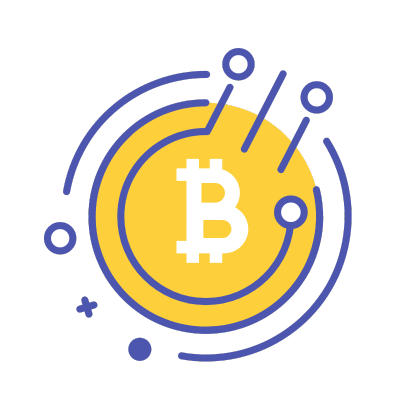As the cryptocurrency market continues to evolve, speed has become a critical factor in successful trading. Low-latency trading, or ultra-fast execution, enables traders to capitalize on the smallest price movements, which can mean the difference between a substantial profit and a missed opportunity. This advantage is especially pronounced in the world of crypto exchanges, where high volatility and constant price fluctuations demand quick action. This blog explores the benefits of low-latency trading in cryptocurrency exchanges, providing real examples, statistics, and organized insights into its significance.
What is Low-Latency Trading?
Low-latency trading refers to a system that minimizes the delay, or “latency,” between the time a trade is initiated and the time it is executed. This latency is measured in milliseconds, and the lower the latency, the faster the trade execution. Low-latency trading relies on high-speed technology, advanced algorithms, and optimized infrastructure to complete transactions at rapid speeds. This trading style, known for its use in high-frequency trading (HFT), has become essential in traditional finance and is now making waves in cryptocurrency markets.
Build Your Secure Crypto Exchange Today!
A Cryptocurrency Exchange Development Company specializes in building secure, scalable platforms for trading digital assets

Why Low Latency Matters in Crypto
Cryptocurrencies are notorious for their volatility. Price swings of several percentage points within minutes or even seconds are not uncommon, making timing crucial. A delay of even a few milliseconds can mean losing out on a profitable opportunity. Thus, low latency becomes a major asset for crypto traders, allowing them to:
- Capture micro-profits that add up over time.
- React instantly to price changes driven by market news, whale moves, or sudden shifts in demand.
- Leverage arbitrage opportunities across different exchanges with precision and speed.
Key Benefits of Low-Latency Trading
1. Faster Execution and Increased Profit Potential
- Speed is Profit: For crypto traders, every millisecond counts. Low-latency trading ensures that orders are executed as close as possible to the intended price.
- Micro-Profits Matter: High-speed trades can capture small profits that, when accumulated over many transactions, lead to substantial returns.
- Example: In the 2021 bull market, high-frequency trading firms reported earnings from crypto exchanges like Binance and Coinbase that exceeded their stock exchange revenues, driven by low-latency trades.
2. Enhanced Arbitrage Opportunities
- Exploit Price Inefficiencies: Price discrepancies exist between exchanges due to variations in demand, supply, and trading volume.
- Profit from Mismatched Prices: Traders leveraging low latency can capitalize on these discrepancies before they vanish.
- Case Study: In 2020, arbitrage traders made millions by trading Bitcoin price differences between U.S. and Asian exchanges, exploiting latency of a few milliseconds.
3. Improved Liquidity
- Increase Market Depth: Low-latency trading enables a higher volume of trades, which contributes to liquidity. Higher liquidity ensures a more stable market and narrows the bid-ask spread.
- More Traders, Less Volatility: Increased participation due to low-latency trading stabilizes prices, making the market more attractive for institutional and retail investors.
- Highlight: Studies have shown that increased liquidity can reduce the bid-ask spread by up to 0.5%, a significant cost-saving for traders.
4. Better Risk Management
- Quicker Responses: Rapid execution minimizes the risk of slippage, where an asset’s price changes between order placement and execution.
- Limit Losses: Low-latency trading enables traders to set more accurate stop-loss levels, ensuring they exit losing trades quickly.
- Real-World Example: During the 2021 flash crash, traders using low-latency systems could execute stop-loss orders immediately, limiting losses as prices nosedived.
Technologies Enabling Low-Latency Trading
Several technologies drive low-latency trading:
- Dedicated Network Infrastructure: Many exchanges utilize fiber optics and dedicated servers to reduce data transfer time.
- Edge Computing: Processing data closer to its source reduces latency, crucial in high-frequency crypto trading.
- Machine Learning and AI: Algorithms analyze patterns and execute trades faster than any human could.
- Direct Market Access (DMA): By connecting directly to the market, traders reduce reliance on intermediary platforms.
Technology | Function | Impact on Latency |
Fiber Optics | Fast data transmission | Reduction by 50% compared to broadband |
Direct Market Access (DMA) | Bypass intermediaries | Cuts latency by several milliseconds |
AI and Machine Learning | Automated trade execution | Near-instantaneous decisions |
Edge Computing | Localized data processing | Reduced latency at source |
Start Your Centralized Exchange Today!
Develop a secure, scalable centralized crypto exchange with advanced trading features, liquidity solutions, and user-friendly UI

Challenges of Implementing Low-Latency Trading
Despite its advantages, low-latency trading comes with its own set of challenges:
- High Infrastructure Costs: The servers, data centers, and network upgrades needed to achieve low latency can be expensive.
- Complexity and Maintenance: Low-latency systems require constant monitoring, adjustments, and updates to stay competitive.
- Regulatory Issues: Some jurisdictions impose regulations to curb the effects of high-frequency trading, which may include latency limits or transaction taxes.
Example: High-frequency trading firms in the U.S. alone spent over $1 billion on infrastructure in 2022, a figure expected to grow as latency becomes even more critical.
Low Latency in Action: Real-World Examples
- Jump Trading
A major player in high-frequency trading, Jump Trading leverages low-latency systems to conduct millions of trades on crypto platforms like Binance and Coinbase, profiting from microsecond-level price movements. Their success highlights the profitability of low-latency trading in crypto. - Alameda Research
Alameda’s proprietary low-latency trading algorithms allowed it to exploit price differences across global crypto markets. Alameda was reported to have profited $300 million from such trades in 2021 alone, showing the substantial impact of ultra-low latency.
During high volatility, Coinbase Pro’s low-latency infrastructure outperformed Kraken, whose latency led to failed transactions and price slippage for traders. This situation underscored the competitive edge low-latency trading provides to exchanges as well.- Jump Trading
Conclusion: Why Low Latency is the Future of Crypto Trading
Low-latency trading isn’t merely a convenience—it’s a competitive edge that enables traders to maximize profit, minimize losses, and capitalize on the high volatility of the cryptocurrency market. As technology advances and trading strategies evolve, the importance of low latency will only grow, influencing both the structure of exchanges and the strategies of institutional and retail investors alike.
Secure Cryptocurrency Trading Solutions
Custom cryptocurrency exchange software development services offering secure, scalable platforms for seamless digital asset trading and management















